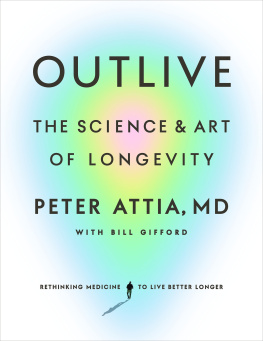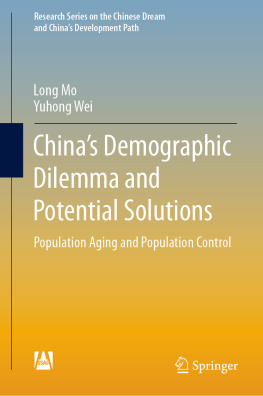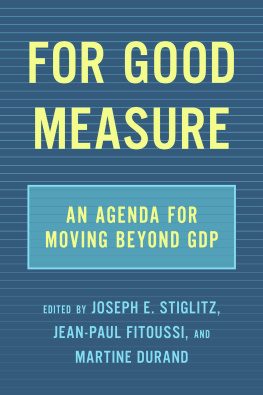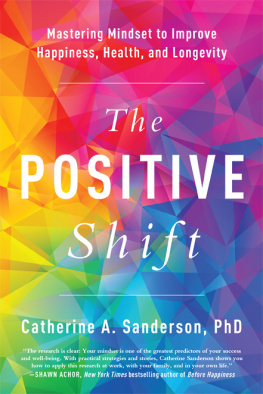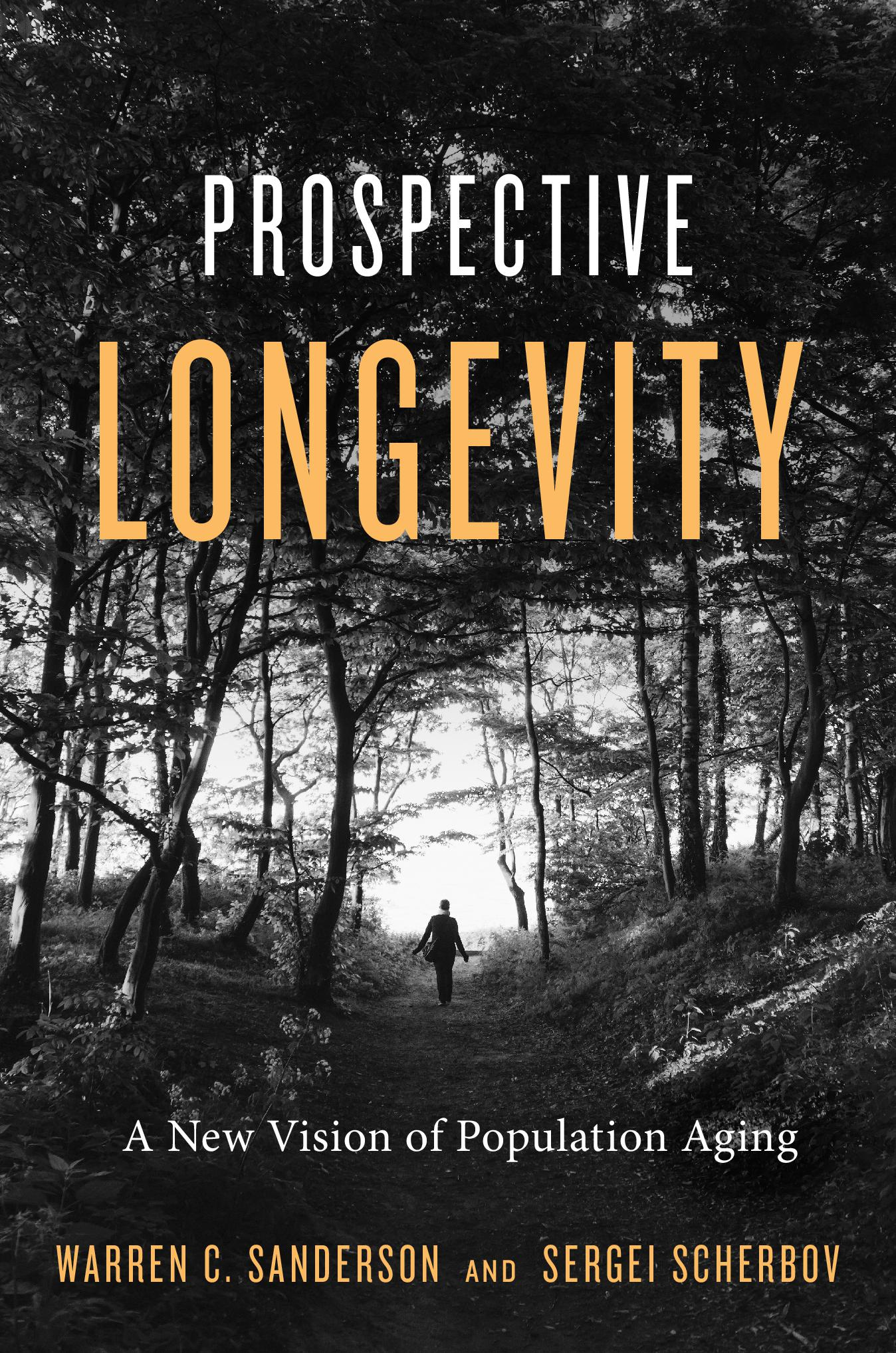Names: Sanderson, Warren C., author. | Scherbov, Sergei, author.
Title: Prospective longevity : a new vision of population aging / Warren C. Sanderson and Sergei Scherbov.
Description: Cambridge, Massachusetts : Harvard University Press, 2019. | Includes bibliographical references and index.
Subjects: LCSH: Population agingStatistical methods. | Ability, Influence of age on. | Biometry. | Longevity.
The Importance of Clear Vision
If you were hiking one day and you encountered a mountain lion, what would you do? The advice given to people is to raise your arms to appear as large as possible, make noise, and act unafraid. But if your vision were highly distorted and what you were really seeing was a pet cat, you might become agitated as it came toward you, but you would certainly be chagrined when it brushed your leg asking to be petted. Other people watching you, your arm motions, your screaming, and your attempt to act unafraid as the cat approached you, might wonder about the appropriateness of your actions.
If you were hiking one day and saw a small tree branch lying on the ground, you might be tempted to step on it in order to experience the satisfying sound of the branch snapping in two. But if your vision were highly distorted, and what was lying on your path was really a rattlesnake, you would hear instead a less satisfying sound, one that could lead to undesirable effects on your well-being.
Whenever possible, it is desirable to help people distinguish between mountain lions and pet cats, and between downed tree branches and rattlesnakes. It is desirable to see more clearly what is in front of us so that we can take appropriate actions. In the field of population aging, our vision has been highly distorted. The goal of this book is to correct those distortions and provide a clearer vision. It is to keep us from screaming when there is nothing to scream at and to keep us safe as we go forward.
Population aging is a complex, multidimensional phenomenon. We encounter many such phenomena in our everyday life. Weather is one of these. When we walk outside, we get a feeling of how warm it is, how humid it is, and how hard the wind is blowing, among other things, but we cannot see the temperature, the humidity, and the wind speed with the naked eye. To see what the temperature, humidity, and wind speed are, we use instruments to measure them: thermometers for temperature, hygrometers for humidity, and anemometers for wind speed. Scientific studies of weather patterns are based on detailed measurements made with those instruments. Population aging is similar. We can walk outside and see how old people look and talk to people about how old they feel, but systematic studies of population aging require detailed measurements. Unfortunately, most measurements of population aging that we have had up to now do not allow us to see very clearly. It is like having thermometers that showed the same reading when the temperature was 32 degrees Fahrenheit (0 degree Celsius) and when it was 50 degrees Fahrenheit (10 degrees Celsius). Although, in the past, the older instruments did help us see population aging better, it is now clear that there is a great deal that they did not allow us to see. It was like wearing a pair of glasses that improved our vision a bit but still were not strong enough to allow us to read. The purpose of this book is to provide you with a new set of glasses, one that provides you with the ability to see the multiple dimensions of population aging more clearly. After you walk around the demographic environment with your new glasses on, we think that you will never want to take them off.
How We Look at Population Aging
At its most fundamental level, the choice of which glasses to use depends on ones conceptualization of age itself. Our view of age is akin to the World Health Organizations (WHO). In their report World Report of Ageing and Health (WHO 2015), aging is conceptualized on the basis of functional ability, not chronological age.
Functional ability comprises the health-related attributes that enable people to be and to do what they have reason to value. It is made up of the intrinsic capacity of the individual, relevant environmental characteristics and the interactions between the individual and these characteristics (28).
As the evidence shows, the loss of ability typically associated with ageing is only loosely related to a persons chronological age (vii).
Our view of age is similar, but what we choose to look at is different. The WHO views aging from the perspective of the functional ability of individuals. We view aging from a population perspective and analyze it in terms of characteristics of populations related to functional ability, such as remaining life expectancy and freedom from disabilities.
What Do Statistical Agencies See?
The changing functional abilities of older people are visible everywhere except in what most major statistical agencies tell us. Those agencies produce tables and graphs based on the premise that people of some fixed age are functionally equivalent in terms of population aging regardless of where or when they lived.
For example, for many years, the United Nations put everyone 60 and over in the category of older persons. An early United Nations document on aging was the Vienna International Plan of Action on Aging (1983), which stated,
Only in the past few decades has the attention of national societies and the world community been drawn to the social, economic, political and scientific questions raised by the phenomenon of aging on a massive scale. In 1950, according to United Nations estimates, there were approximately 200 million persons 60 years of age and over throughout the world. By 1975, their number had increased to 350 million. United Nations projections to the year 2000 indicate that the number will increase to 590 million, and by the year 2025 to over 1,100 million; that is, an increase of 224 per cent since 1975 (United Nations 1983).
Over 3 decades later, in the United Nations World Population Ageing 2015, we have
According to data from World Population Prospects: the 2015 Revision (United Nations, 2015), the number of older personsthose aged 60 years or overhas increased substantially in recent years in most countries and regions, and that growth is projected to accelerate in the coming decades.


